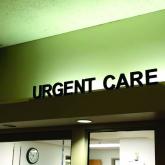News
Genetic tests create treatment opportunities and confusion for breast cancer patients
- Author:
- Michelle Andrews, Kaiser Health News
Patients are sometimes left paying out-of-pocket for exams that are not yet the standard of care, and even the most up-to-date oncologists may be...
News
Newborns get routine heel blood tests, but should states keep those samples?
- Author:
- Michelle Andrews, Kaiser Health News
Some states allow the blood spots to be used in research studies, sometimes by third parties for a fee, or provided to law enforcement personnel...
News
Acceptance of biosimilars grows but greater use may hinge on switching, interchangeability studies
- Author:
- Michelle Andrews, Kaiser Health News
The slow adoption of biosimilars in the United States has begun to pick up and experts hope that they can put a brake on drug spending, but...
News
Many health plans now must cover full cost of expensive HIV prevention drugs
- Author:
- Michelle Andrews, Kaiser Health News
Under the Affordable Care Act, preventive services that receive an “A” or “B” rating by a task force group of medical experts in prevention and...
News
States act to safeguard young cancer patients’ chances to have children
- Author:
- Michelle Andrews, Kaiser Health News
A growing number of states now require plans to cover fertility preservation when medically necessary treatment jeopardizes fertility
News

Hospitals gear up for new diagnosis: human trafficking
- Author:
- Michelle Andrews, Kaiser Health News
The woman arrived at the emergency department at Huntington Hospital on New York’s Long Island after she was hit by her boyfriend during an...
News
Hepatitis C drug’s lower cost paves way for Medicaid, prisons to expand treatment
- Author:
- Michelle Andrews, Kaiser Health News
The recent approval of a less expensive drug that generally cures hepatitis C in just eight weeks may make it easier for more insurers and...
News

Urgent care sites cater to cancer patients, letting them check some worries at door
- Author:
- Michelle Andrews, Kaiser Health News
On an afternoon a few weeks ago, Faithe Craig noticed that her temperature had spiked to just above 100 degrees. For most people, the change might...
News
For doctors, a clampdown on visas could have an uneven effect in the U.S.
- Author:
- Michelle Andrews, Kaiser Health News
Limiting the number of foreign doctors who can get visas to practice in the United States could have a significant impact on certain hospitals and...
